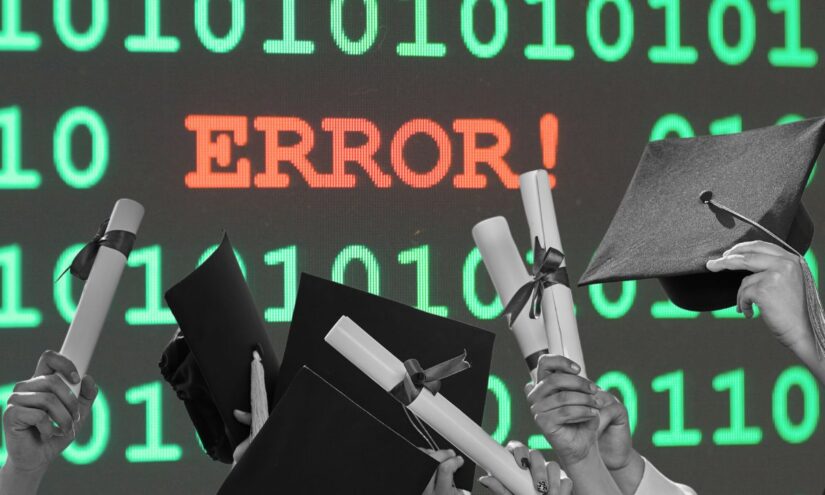During this summer, a team of students from MIT embarked on a journey to the sou …
Iowa High School Graduation Rates Incorrectly Reported for Years
Carlos Changemaker

The Iowa Department of Education revealed on Friday that high school graduation rates have been inaccurately calculated for a significant period, spanning up to ten years, due to an error in legacy code.
It was discovered that the state’s computation of four- and five-year graduation rates utilized legacy code that failed to include mobile students—those who frequently change school districts due to reasons like foster care, homelessness, or being part of a military family, and eventually drop out after transferring.
Due to this oversight, students in this demographic were mistakenly excluded from the graduation cohort, resulting in inflated graduation rates, according to the department’s official statement.
The malfunctioning code that led to these miscalculations has been in use for a decade or more in determining graduation rates. However, subsequent to the identification of the problem by the Information and Analysis Services of the department, the code has been rectified, and updated graduation rate data from affected previous years has been issued by the state.
Jay Pennington, the Bureau Chief of Information and Analysis Services at the department, elaborated that apart from rectifying the error, a comprehensive review of the underlying code was conducted, and an examination of graduation rate data at a student level was carried out to ensure data accuracy in future assessments.
“Calculating graduation rates is a complex process… data comparisons to ensure data quality in future years,” stated Pennington in the release, emphasizing the meticulousness required in the calculation methodology.
The disclosure coincided with the release of the state’s four-year high school graduation rate for the class of 2023, which stands at 87.5%. This rate reflects a decrease from the initially reported rate for the class of 2022 (89.9%), according to the education department, yet a slight improvement from the modified rate of 87.4%.
Furthermore, the corrected five-year graduation rates for previous classes were disclosed since the rate for the class of 2023 will not be available until 2025. The class of 2021 saw a 90.1% graduation rate over five years, and the class of 2022 achieved an 89.7% rate.
Despite the error influencing the graduation rates, the state’s dropout rate among students in grades 9 through 12 remained unaffected. During the 2022-2023 academic year, 4,718 students—equivalent to 3.02%—dropped out, an improvement from the previous year’s rate of 3.04% based on education department data.
Regarding the comparison with neighboring states and national standards, Iowa’s 2023 graduation rate aligns suitably. At 87.5%, Iowa surpasses Minnesota (83.3%), Nebraska (87.2%), and South Dakota (84.1%), while trailing Illinois (87.6%), Missouri (89.9%), and Wisconsin (90.5%).
The Director of the Department of Education, McKenzie Snow, expressed the department’s commitment to furnishing accurate educational outcome information to Iowans.
“The Department promptly implemented additional quality controls and is reevaluating its data verification procedures to ensure accuracy in the future,” Snow stated, emphasizing a renewed focus on transparency.
For access to the data breakdown based on school districts and student demographics, including English learners and those with disabilities, please visit the Department of Education’s website.


